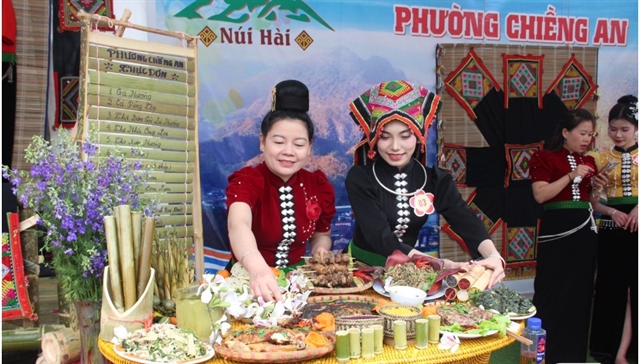 Features
Features

The National Museum of History is showing 18 artefacts which have been recognised as national treasures, some dating as far as the Đông Sơn era (2500-2000BC) . They are on display together for the first time at a special exhibition titled "Việt Nam’s National Treasures" in downtown Hà Nội.
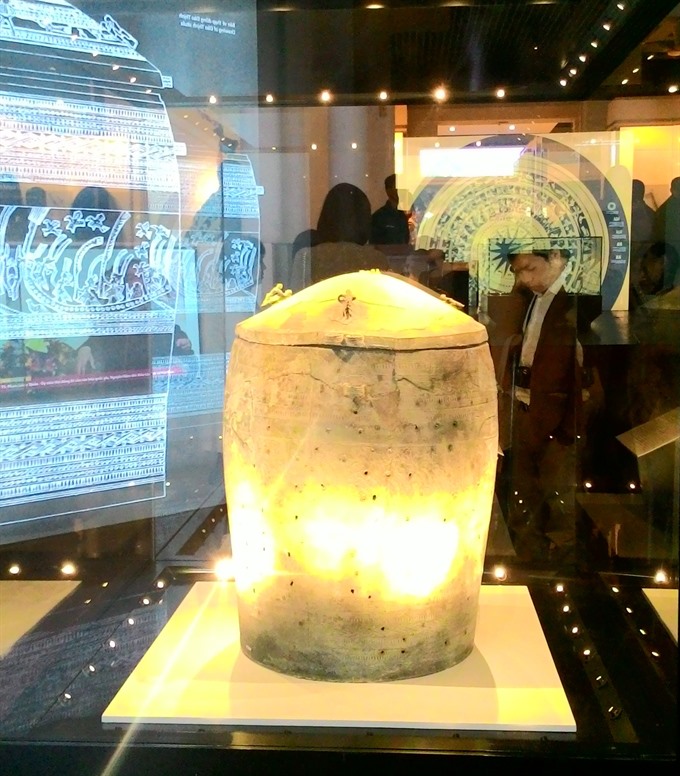 |
| Sophisticated design: This Đào Thịnh bronze situla was discovered on the eroded bank of the Red River in Đào Thịnh Commune, in the northern province of Yên Bái in 1960. |
By Minh Thu
The National Museum of History is showing 18 artefacts which have been recognised as national treasures, some dating as far as the Đông Sơn era (2500-2000BC) . They are on display together for the first time at a special exhibition titled "Việt Nam’s National Treasures" in downtown Hà Nội.
Some of the artefacts have never been exhibited in public.
The Đào Thịnh bronze situla has been displayed several times as a typical artefact of the Đông Sơn Culture. This time it appears with updated information – the result of recent research.
The situla was discovered on the bank of the Red River in Đào Thịnh Commune in the northern province of Yên Bái in 1960.
This is the largest bronze situla and the most sophisticated one among hundreds of Đông Sơn situlas that have been unearthed. Along with a conical lid, the situla has a cylindrical shape which gradually gets narrower towards the bottom.
Decorative patterns on the Đào Thịnh situla are abundant and as elaborate as those on the best Đông Sơn drums. Specifically, the major decorative band on its body has six boats depicted in a row. Each boat carries six or seven birdmen in different postures, surrounded by birds flying, fish, mythical waterbirds and crocodiles swimming below.
 |
| Admirable figure: Bronze lamp in the shape of a kneeling man from the Đông Sơn Culture. |
Researchers recently talked about the most outstanding feature of the Đào Thịnh situla -- figurines of four couples in positions of intercourse on the lid, with the genitals of the men depicted much larger than normal.
"This is consistent with the fertility worship of wet rice growers, who desire the procreation of living beings," Phạm Quốc Quân, member of the National Cultural Heritage Council, said.
“We believe that it belonged to a chieftain. At the beginning, it stored seeds and symbolised the power of the owner. Then it was used to store his ashes after death.”
Art researcher-painter Lê Thiết Cương agreed. “We don’t see the symbol of sex on other artefacts of the Đông Sơn Culture.”
“Figurines of couples copulating symbolised fertility, which means people in the Đông Sơn Culture believed death is not the end, and that death and birth are a cycle,” he said.
Another impressive representative of the Đông Sơn Culture is a boat-shaped coffin or hollow tree-trunk coffin, which is 450cm long and 77cm wide at the largest part.
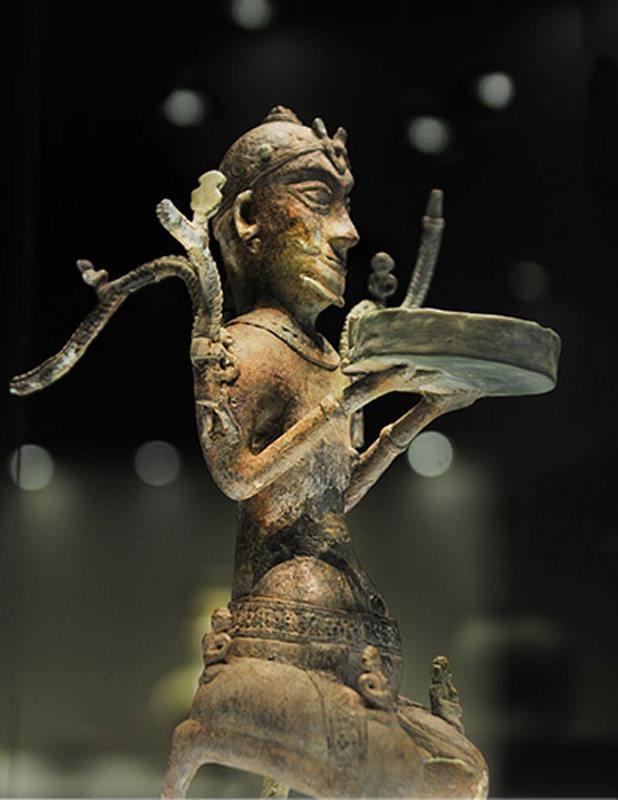 |
| Symbol of fertility: Lamp in the shape of a man wearing only a loincloth. |
The Việt Khê coffin was excavated in 1961 at Việt Khê Village, Hải Phòng City. It is made of iron wood with 107 funerary objects, including domestic utensils, working tools, musical instruments and weapons. They were made from bronze, lacquer, stone, bamboo and leather. These objects are on display at an exhibition of Asian history at the Archaeological Museum of Herne, Germany.
The Việt Khê coffin is one of the most significant examples of this funeral custom. It is believed to be the largest coffin with the richest funerary items. The presence of a bronze drum is remarkable because the drum is not only an instrument, but also a symbol of power of the ancient Việt people. It is believed that the owner of the Việt Khê burial may have been a rich and powerful chieftain.
The collection of funerary objects from the Việt Khê burial provides us an insight into the history, culture, society, habits and customs of the Đông Sơn people from over 2,000 years ago. Further, the materials of the burial are also considered indicators of a diversified economy, which included agriculture, commerce and handicrafts made from metallurgy, carpentry, textiles or glass manufacturing, said researcher Quân.
The existence of several objects that originated from China, such as the bronze sword, ring-handle knife, bell and some other objects manufactured locally but inspired by Chinese civilisations, such as the bronze vessel with high perforated ring foot or bronze tripod cauldron, are evidence of the network of cultural exchange between the Đông Sơn people and other civilisations.
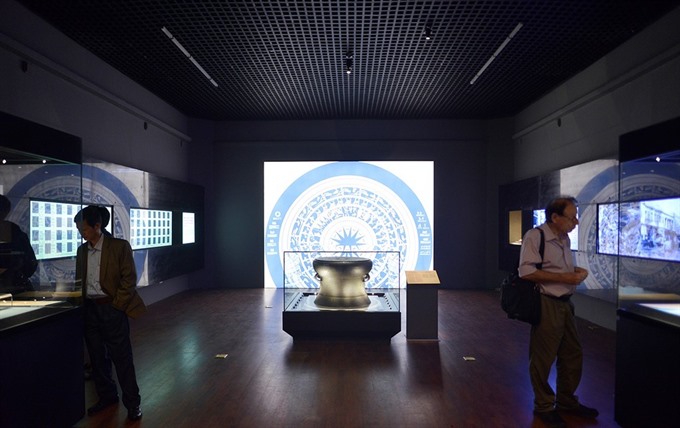 |
| National pride: The national treasures and historical and cultural stories help people understand how their ancestors created art and crafts. |
A storage jar with brown pattern ceramic dating from the Trần Dynasty (1226-1400) is also among the objects showcased for the first time.
It was discovered while people were digging a well in the area of the Trần Temple, Lộc Vượng District, northern Nam Định Province, in 1972.
This is a thick and hard ceramic jar and a typical ceramic object of the Trần Dynasty. Double lotus petals are visible around the mouth. The jar was divided into eight segments; each segment was decorated with a vase of the lotus. The jar is intact, large and made of high-quality ceramic.
It was discovered from the Thiên Trường Palace (now Trần Temple) where the kings’ fathers lived after relinquishing the throne to their sons. Hence, it was confirmed the jar belonged to the royal family.
Though the Prison Diary by President Hồ Chí Minh has been published and re-published several times in 20 languages, not many people have seen the original version.
The diary consists of 82 pages and 133 poems written in the Han script from August 1942 to September 1943 while he was imprisoned in Guangxi Province (China) by the Kuomintang government.
The book (12.5cm by 9.5cm) is a valuable treasure providing insight into the life and revolutionary ideas of national leader Hồ Chí Minh. In addition to its historic value, the diary is imbued with a profound humanity, revealing the great and humane character of Hồ Chí Minh, who devoted his entire life to Việt Nam’s struggle for independence.
Also on display is Đường Kách Mệnh (Road to Revolution). Published in 1927, it is an important book sketching the revolutionary road initiated by Hồ Chí Minh. The book is a collection of lectures compiled by President Hồ in 1925-27.
Appeal for National Resistance, the manuscript written on December 19, 1946, by President Hồ Chí Minh in Vạn Phúc Village on the outskirts of Hà Nội, is also showcased. It urged Vietnamese people across the country to rise and fight against the French colonialists who were invading Việt Nam again.
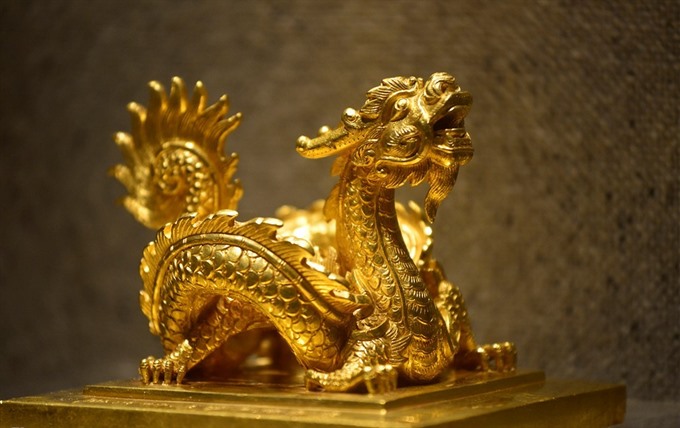 |
| Unique: A golden seal used during the reign of King Minh Mệnh, (Nguyễn Dynasty) in 1827. |
Joe Sosnow, a doctor from the United States, and his wife selected the National Museum of History as one of their destinations on a vacation to Hà Nội owing to their special interest in Vietnamese history. Sosnow said he was very impressed by the exhibition of the national treasures. He has two replicas of Đông Sơn bronze drums at home and said it was wonderful to see the authentic bronze drum.
“I’m so lucky that I visited to the museum during the exhibition. The artefacts are magnificent and they reveal the exquisite skill and sensibility of the Vietnamese craftsmen,” Sosnow said.
Nguyễn Văn Đoàn, vice director of the museum, said "The exhibition is meant to promote the value of the national treasures. Together with the exhibits, historical and culture-related stories will be presented, thus the audience can get a further understanding about the craftsmanship of our ancestors, which may encourage patriotism, national pride and contribute to conserving and promoting Vietnamese cultural values."
The exhibition runs until the end of May at the National Museum of History, 1 Phạm Ngũ Lão Street, Hà Nội. — VNS
 |
| Authentic find: A Ngọc Lũ Bronze Drum dating to the Đông Sơn Culture (2500-2000 BC). VNS Photo Minh Thu |
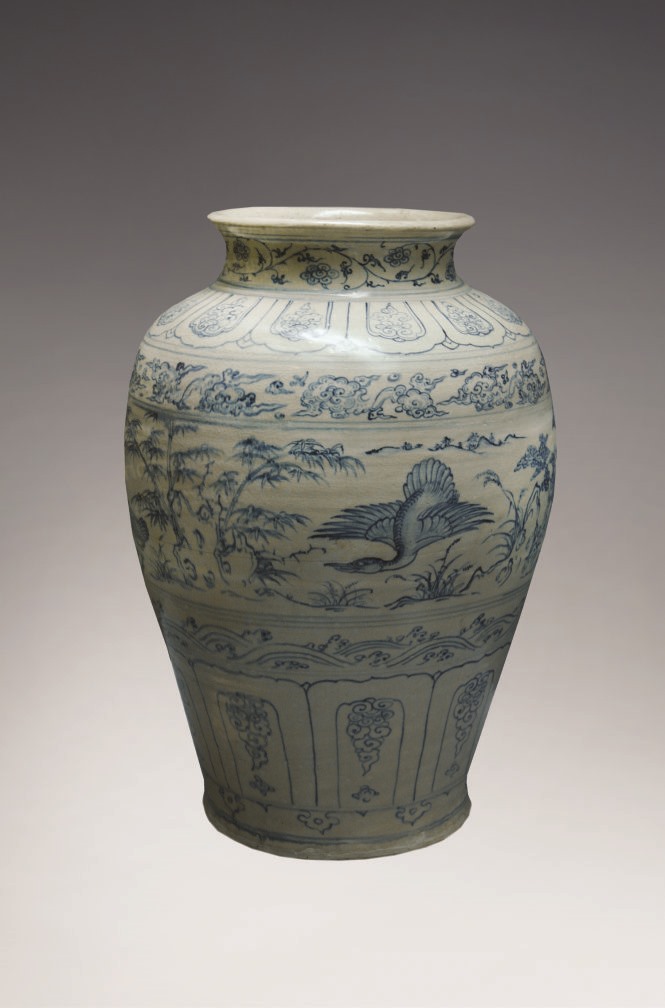 |
| Ceramic-making skills: Pottery jar with swan patterns dating from the 15th-16th centuries, found on an offshore shipwreck in Quảng Nam Province in 1999. |

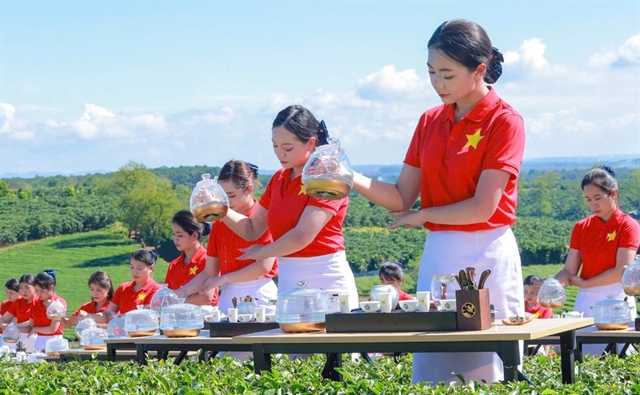
.jpg)

